Indoor Nature: A Library Wellbeing Initiative
What are we doing?
Bringing nature indoors through potted plants and images of trees.
Why are we doing this?
By bringing potted plants and vibrant images of trees inside the Okanagan Library, we will provide indoor exposure to nature, relying on an established health promotion strategy with demonstrated positive impacts on physiological and psychological health.¹ View a map of plant locations.
The Okanagan Library was renovated in 2018 and continued efforts are underway to improve inclusivity, facilitate a variety of quality study spaces, and determine creative ways to support student academic success.
By adding potted plants to areas with natural light and images of trees to internal areas of the building, indoor exposure to nature will enhance local environmental satisfaction.² An increasing body of research focused on direct benefits of indoor nature exposure to students in a campus environment.³
How does this project support UBC Wellbeing?
This project directly supports the Okanagan Charter by utilizing health promotion evidence to improve the campus environment by enhancing learning spaces. It also addressed multiple categories of the Wellbeing Strategic Framework including the built and natural environment and mental health and wellbeing. This project creates intersection in these priority areas by altering the indoor environment by relying on evidence that the following health criteria can be positively impacted by either potted plants, images of nature (specifically trees), or both: mood, brain activity, cognition, temperature, stress, perceived attractiveness, general health, pain tolerance, restorativeness.¹
Learn About the plants
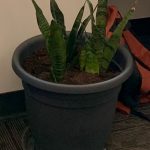 Dracaena trifasciata (Snake Plant) |
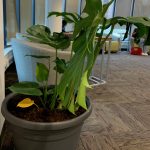 Monstera Deliciosa (Swiss cheese plant) |
 Zamioculcas (ZZ plant) |
Learn about the Tree Prints
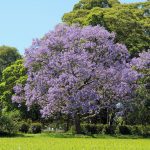 Title: Jacaranda |
 Title: Milky Way between Ponderosa Pines |
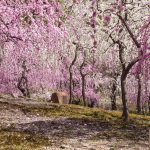 Title: Plum Blossom |
 Title: Bodhi Tree |
 Title: jacaranda |
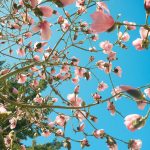 Title: First Magnolias |
 Title: Bamboo Forest, Kyoto, Japan |
 Title: Sunset in the Kootenays (Rossland, BC) |
 Title: TK 287 |
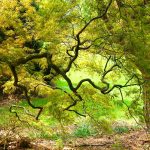 Title: Branch of Japanese Maple Tree |
Acknowledgement
This project is made possible by funding from the UBC Wellbeing Strategic Initiative Fund.
Note: This news story was updated in 2023 to reflect the established plant/photo program.
Works Cited
¹Mcsweeney, J., Rainham, D., Johnson, S. A., Sherry, S. B., & Singleton, J. (2015). Indoor nature exposure (INE): A health-promotion framework. Health Promotion International, 30(1), 126-139. https://doi.org/10.1093/heapro/dau081
²Dopko, R. L., Zelenski, J. M., & Nisbet, E. K. (2014). Nature salience increases judgments of environmental satisfaction. Ecopsychology, 6(4), 207-217. https://doi.org/10.1089/eco.2014.0042
³van den Bogerd, N., Dijkstra, S. C., Seidell, J. C., & Maas, J. (2018). Greenery in the university environment: Students’ preferences and perceived restoration likelihood.PLOS One, 13(2): e0192429 https://doi.org/10.1371/journal.pone.0192429